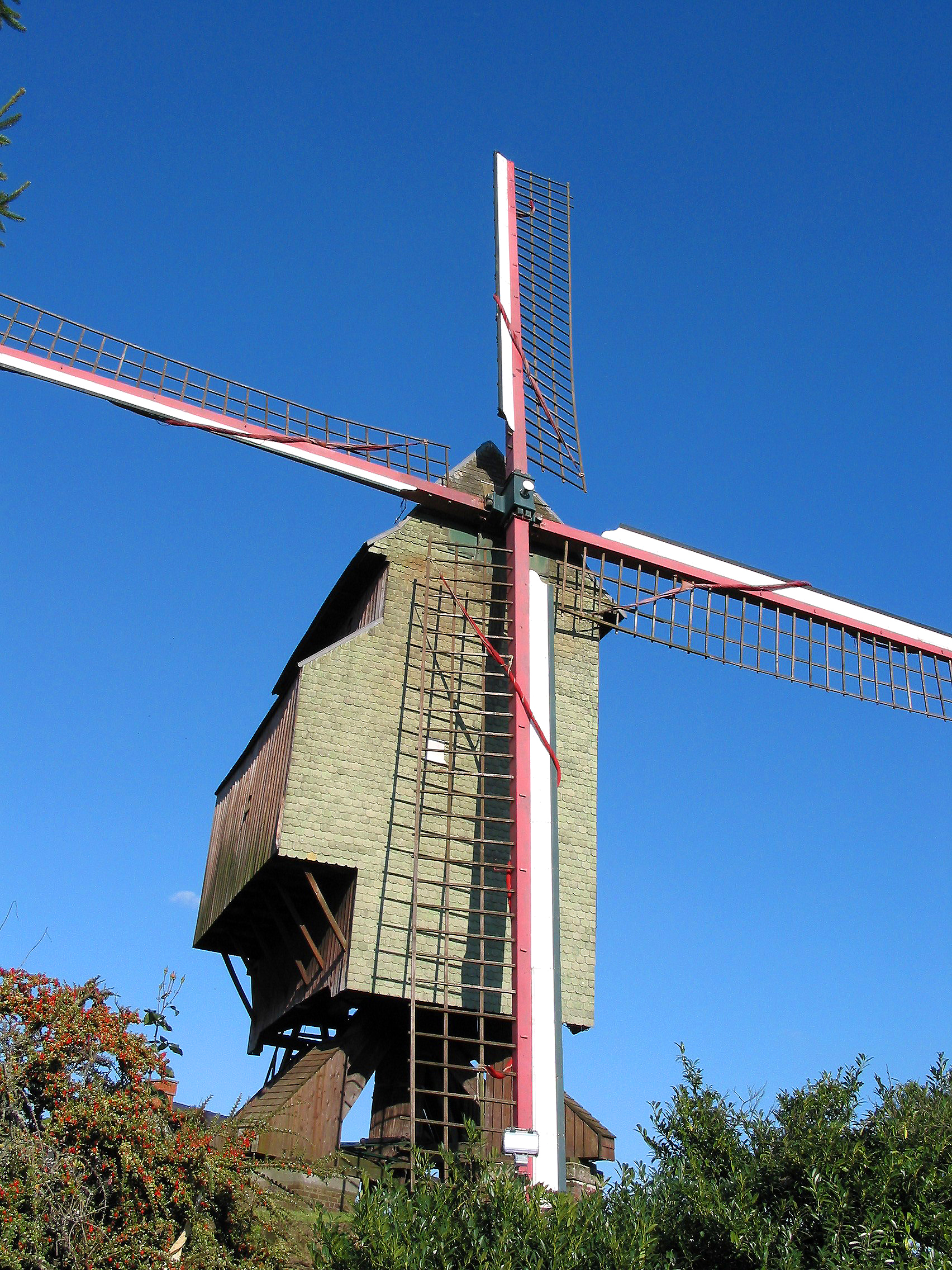|
Bar Gemel
In English heraldry, the bar is an heraldic ordinary consisting of a horizontal band extending across the shield. In form, it closely resembles the fess but differs in breadth: the bar occupies one-fifth of the breadth of the field of the escutcheon (or flag); the fess occupies one-third. Heraldists differ in how they class the bar in relation to the fess. A number of authors consider the bar to be a diminutive of the fess. But, others, including Leigh (1597) and Guillim (1638), assert that the bar is a separate and distinct ‘honorouble ordinary’. Holme (1688) is equivocal. When taken as an honourable ordinary, it is co-equal with the other nine of the English system. Some authors who consider the bar a diminutive of the fess class it as a subordinary. Authorities agree that the bar and its diminutives have a number of features that distinguish them from the fess. The diminutive of the bar one-half its breadth is the closet, while the diminutive one-quarter its breadth is th ... [...More Info...] [...Related Items...] OR: [Wikipedia] [Google] [Baidu] |
Bar Demo
Bar or BAR may refer to: Food and drink * Bar (establishment), selling alcoholic beverages * Candy bar ** Chocolate bar *Protein bar Science and technology * Bar (river morphology), a deposit of sediment * Bar (tropical cyclone), a layer of cloud * Bar (galaxy), a feature of many spiral galaxies * Bar (unit), a unit of pressure * BAR domain, a protein domain * Bar stock, of metal * Sandbar Computing * Bar (computer science), a placeholder name in programming * Base Address Register in PCI * Bar, a mobile phone form factor * Bar, a type of graphical control element Typography * Fraction bar * Overbar, a line over a formula or segment of text * Underbar, a line under a formula or segment of text * Vertical bar Law * Bar (law), the legal profession * Bar association * Bar examination Media and entertainment * ''Bar'' (Croatian TV series) * Bar (Czech TV series) * Bar (dance), Turkey * Bar (music), a segment * Bar (Polish TV series) * Bar (Slovenian TV series) * ''Bay Area ... [...More Info...] [...Related Items...] OR: [Wikipedia] [Google] [Baidu] |
John Ferne
Sir John Ferne (c. 1553 – 20 June 1609) was an English writer on heraldry, a genealogist, an eminent common lawyer and MP. Life John Ferne was the eldest son of William Ferne of Doncaster, Yorkshire and Temple Belwood, Lincolnshire. He succeeded his father in 1592 and was knighted on 30 May 1604. He matriculated from St John's College, Cambridge in 1572, was said to have studied at Oxford, and was admitted to the Inner Temple in 1576. He served as a secretary in the Council of the North (1595–1609). He was elected MP for Boroughbridge in 1604, sitting until 1609. He died on 20 June 1609. He had married Elizabeth, the daughter of John Nedham of Wymondley Priory, Little Wymondley, Hertfordshire, having ten sons and two daughters. ''Blazon of Gentrie'' His 1586 book entitled ''Blazon of Gentrie'' is written in the form of a dialogue, with six interlocutors, representing a herald, a knight, a divine, a lawyer, an antiquary, and a ploughman. Collumell, the ploughman, who ... [...More Info...] [...Related Items...] OR: [Wikipedia] [Google] [Baidu] |
Ellezelles
Ellezelles (; ; ; ) is a municipality of Wallonia located in the province of Hainaut, Belgium. It consists of the following districts: Ellezelles, Lahamaide, and Wodecq. Bordering Flanders, the town is home to a minority of Dutch-speakers. The village archives contain a document "attesting" to the birth of Hercule Poirot on 1 April 1850. Notable people * Lamoral, Count of Egmont, Prince of Gavere (1522 in La Hamaide near Ellezelles – executed in 1568) a general and statesman in the Spanish Netherlands just before the start of the Eighty Years' War The Eighty Years' War or Dutch Revolt (; 1566/1568–1648) was an armed conflict in the Habsburg Netherlands between disparate groups of rebels and the Spanish Empire, Spanish government. The Origins of the Eighty Years' War, causes of the w .... * Richard Ely (born 1974 in Ellezelles) a Belgian writer, journalist and ethnobotanist. References External links * Municipalities of Hainaut (province) Bel ... [...More Info...] [...Related Items...] OR: [Wikipedia] [Google] [Baidu] |
Flags Of The Confederate States Of America
The flags of the Confederate States of America have a history of three successive designs during the American Civil War. The flags were known as the "Stars and Bars", used from 1861 to 1863; the "Stainless Banner", used from 1863 to 1865; and the "Blood-Stained Banner", used in 1865 shortly before the Confederacy's dissolution. A rejected national flag design was also used as a battle flag by the Confederate Army and featured in the "Stainless Banner" and "Blood-Stained Banner" designs. Although this design was never a national flag, it is the most commonly recognized symbol of the Confederacy. Since the end of the Civil War, private and official use of the Confederate flags, particularly the battle flag, has continued amid philosophical, political, cultural, and racial controversy in the United States. These include flags displayed in states; cities, towns and counties; schools, colleges and universities; private organizations and associations; and individuals. The battle fl ... [...More Info...] [...Related Items...] OR: [Wikipedia] [Google] [Baidu] |
Flag Of Austria
The national flag of Austria () is a triband in the following order: red, white, and red. The Austrian flag is considered one of the oldest national symbols still in use by a modern country, with its first recorded use in 1230. The Austrian triband originated from the arms of the Babenberg dynasty. As opposed to other flags, such as the black-and-yellow banner of the Habsburgs, the red-white-red flag was from very early on associated, not with a reigning family or monarch, but with the country itself. In addition to serving as the flag of Austria since 1230, it was adopted as the naval ensigns and state flags of the Kingdom of Lombardy–Venetia, Grand Duchy of Tuscany and Duchy of Modena and Reggio in the 18th and 19th centuries respectively, as they were ruled by the House of Habsburg or its cadet branches. History Origins The flag traces back to the coat of arms of the medieval Babenberg dynasty, a silver band on a red field (in heraldry: ''Gules a fess Argent ... [...More Info...] [...Related Items...] OR: [Wikipedia] [Google] [Baidu] |
Alfred Znamierowski
Alfred Znamierowski (21 June 1940 – 23 October 2019) was a Polish Vexillology, vexillologist, heraldry, heraldist, illustrator, and journalist. During his career he published several books and designed hundreds of coats of arms, flags, banners and seals for over 200 different municipalities and institutions. Biography Znamierowski was born in June 1940 in Warsaw, Poland. He studied geography at the University of Warsaw. In 1965, he left Poland, and from 1966 until 1978 was an editor of the Polish Service of Radio Free Europe in Munich, Germany. In 1978, he settled in the United States and founded The Flag Design Center in San Diego, California. He worked closely with the foremost German heraldist, Ottfried Neubecker, and the American vexillologist Whitney Smith. Znamierowski produced thousands of renditions of coats of arms and flags for their books as well as for numerous encyclopedias in Germany, United States, and Poland. For many years he was the chief artist of the ''Flag ... [...More Info...] [...Related Items...] OR: [Wikipedia] [Google] [Baidu] |


